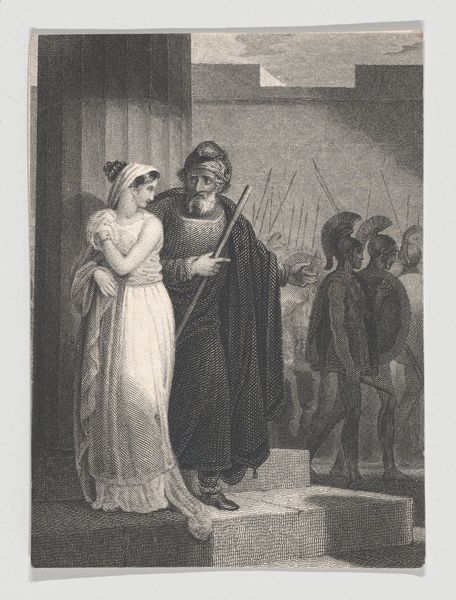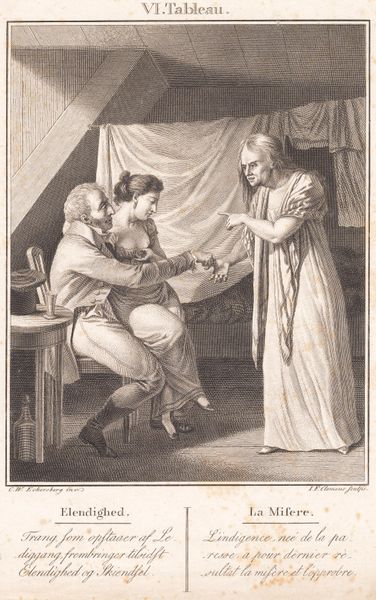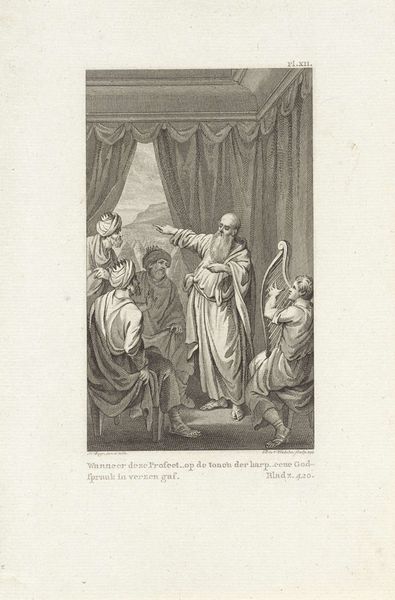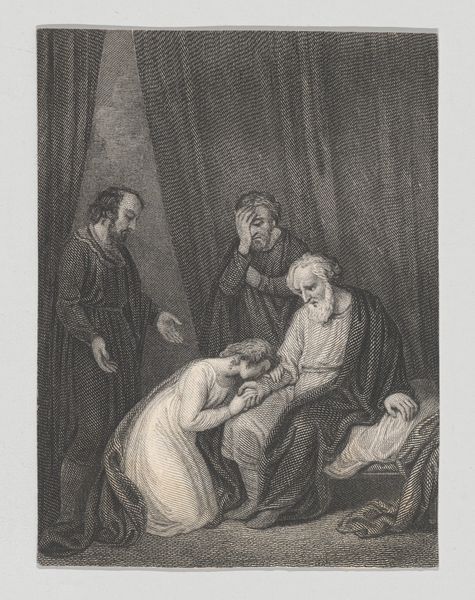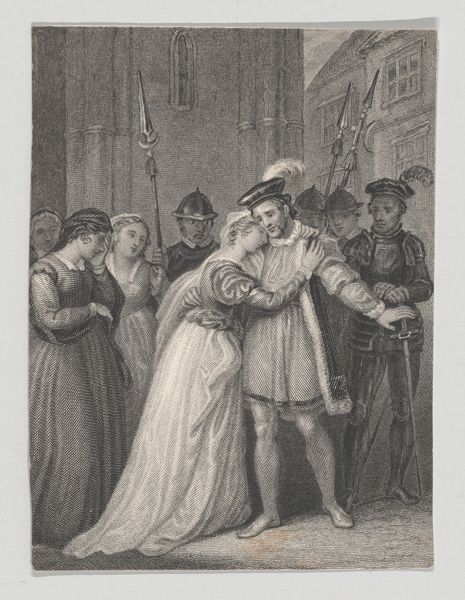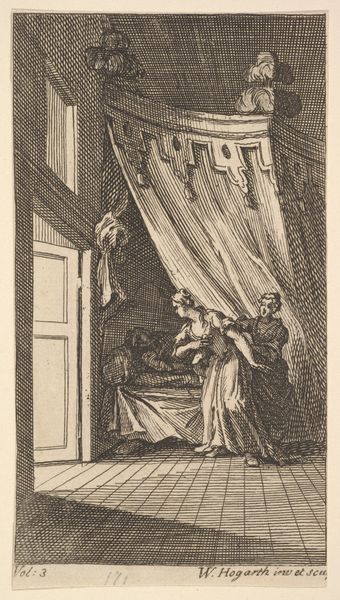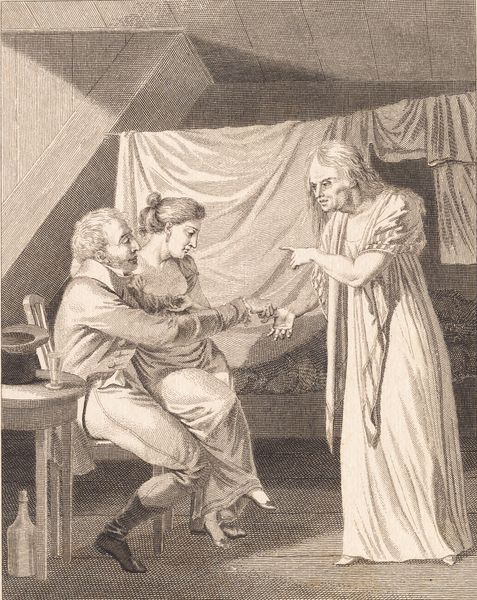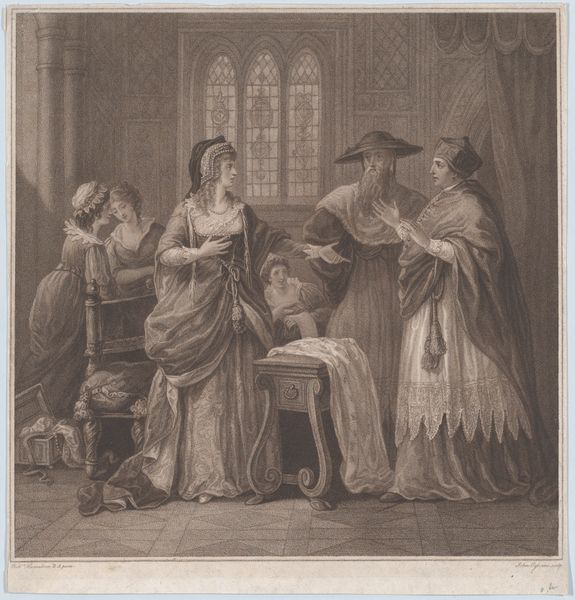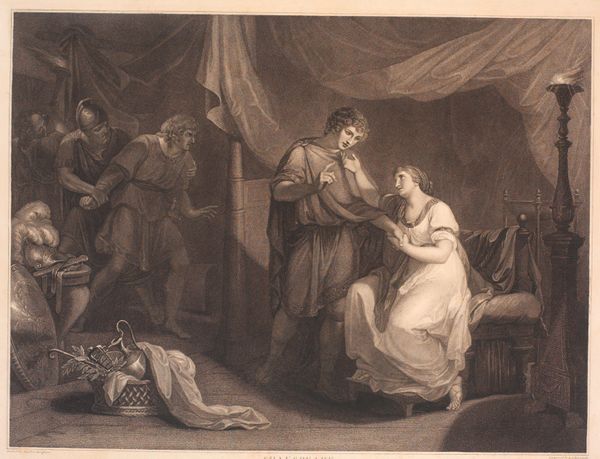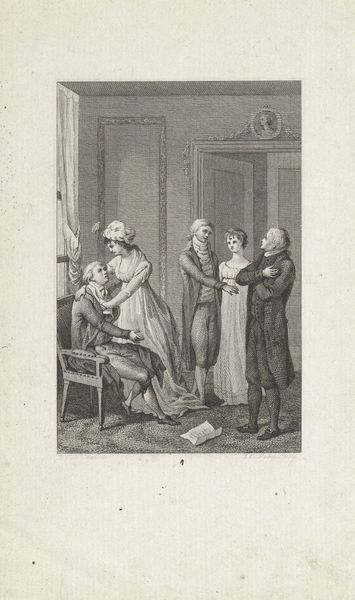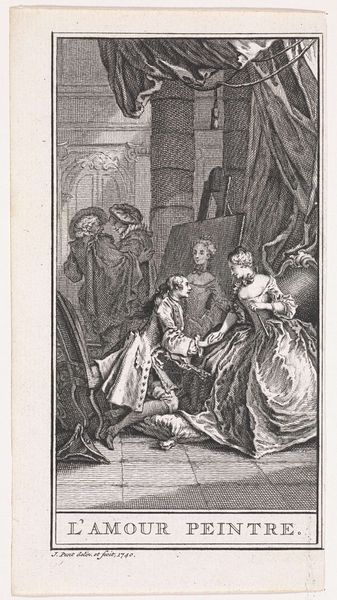
Catherine of Aragon and Cardinal Wolsey (Shakespeare, King Henry VIII, Act 3, Scene 1) 1825 - 1840
0:00
0:00
drawing, print, engraving
#
portrait
#
drawing
#
narrative-art
# print
#
men
#
history-painting
#
engraving
Dimensions: Sheet: 3 7/16 × 2 9/16 in. (8.8 × 6.5 cm)
Copyright: Public Domain
Curator: Welcome. We're here to explore Edward J. Potbury's engraving, dating from between 1825 and 1840, titled "Catherine of Aragon and Cardinal Wolsey (Shakespeare, King Henry VIII, Act 3, Scene 1)". Editor: Immediately striking is the dramatic contrast of light and shadow. The cross-hatching in the engraving gives it such a weight, doesn’t it? It feels like a theatrical stage set, all about performance and tension. Curator: Precisely. Notice how Potbury uses the engraving technique to delineate character—the detailed robes of Wolsey contrasting with the lighter, almost ethereal drapery surrounding Catherine. There's a clear semiotic language at play in their clothing, signaling power and piety. Editor: And speaking of production, consider the skill involved in producing such a fine engraving. Think of the engraver bent over the metal plate, meticulously carving those lines. The reproduction suggests this historical scene served a wider audience. The material of the engraving transforms into social and economic currency. Curator: A astute observation. One cannot help but be drawn into the structural dynamics between the figures. Catherine’s upward gaze creates a powerful diagonal that meets the solemn faces of the men. Her body, framed by the dark chair and curtains, establishes the scene’s central emotional core. Editor: Those solemn faces are intriguing. Who do these men represent? How complicit are they in the predicament we see before us? Their inclusion speaks to the power structures within Henry VIII's court. Curator: Their presence definitely amplifies the scene's tension and serves to question themes of faith and power—it creates a spatial dynamic charged with conflict. The scene resonates deeply within a larger historical context. Editor: Ultimately, Potbury's decision to capture this precise moment raises interesting questions about the intersection of theatrical drama, social critique, and accessible reproduction. I'm left wondering how audiences engaged with such images outside the confines of a theater. Curator: It invites reflections on power dynamics within systems of authority. The artist challenges us to examine our preconceptions regarding faith and authority.
Comments
No comments
Be the first to comment and join the conversation on the ultimate creative platform.

